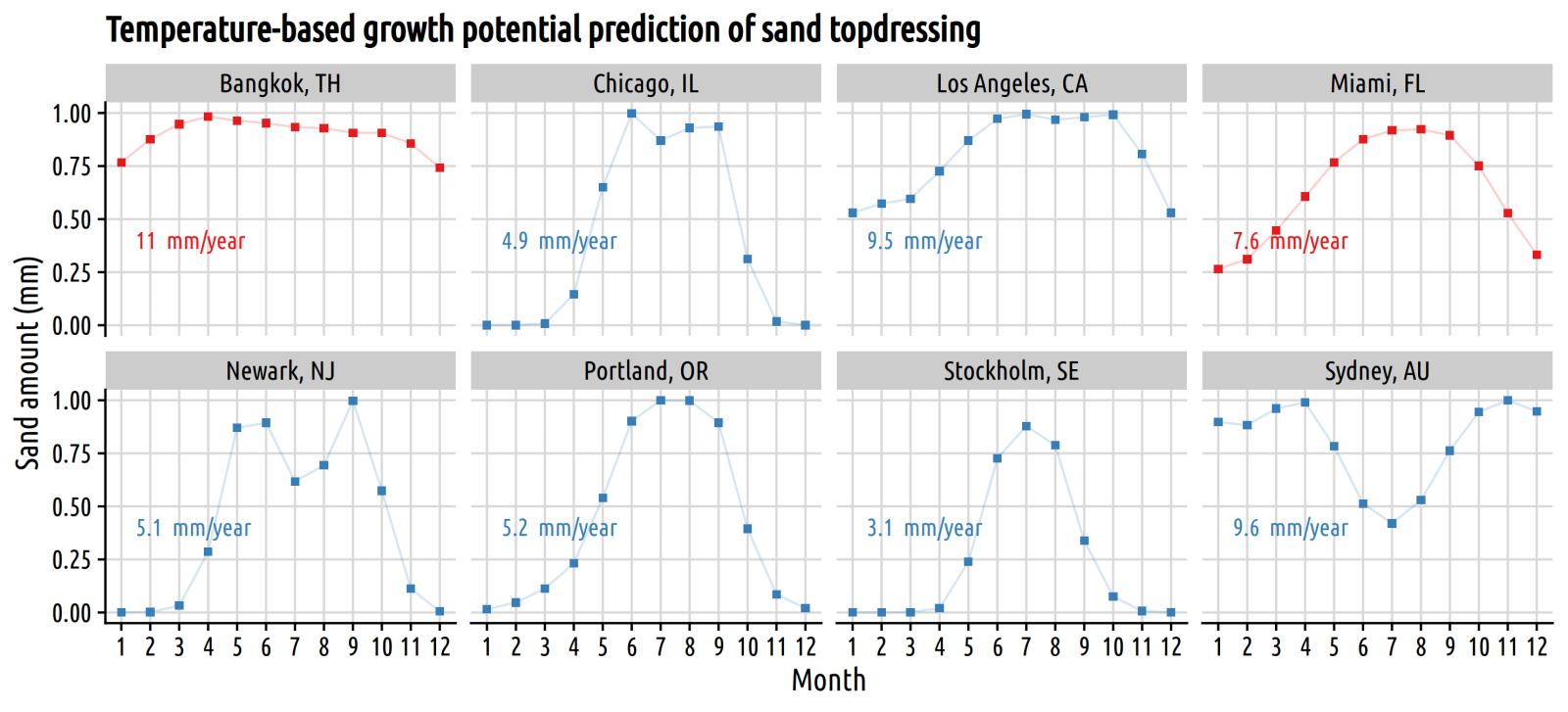The PACE Turf topdressing rate spreadsheets have been updated with a new default starting value for monthly maximum topdressing sand.
You can use the spreadsheets to input the monthly average air temperatures at your location. The spreadsheet then converts those temperatures to growth potential (GP), and predicts how much sand topdressing may be required.
With the new default, you’ll get numbers like this. I’ve calculated these for warm-season grass at Bangkok and Miami and for cool-season grass at all the other locations.

The spreadsheets previously had a default starting value that produced results matching the low rate of Hempfling et al.’s sand topdressing amounts. That starting value has always been adjustable within the spreadsheet. After some recent conversations with Dr. Stowell, he’s decided to update the default starting value to match the high rate of Hempfling et al.
I think it makes sense to use the higher rate as a default because:
-
The higher rate in Hempfling et al. had less disease, faster green speed, and better turf quality.
-
Schmid et al. found that “greens receiving an annual sand topdressing rate of 20.3 ft3/1000 ft2 [6 mm] were consistently \(\leq\) 3.3% soil organic matter” in the top 3 inches (7.6 cm). Based on these survey results, which were obtained from a large survey of greens from 15 US states, there is an expectation that 6 mm is a reasonable starting point number.
-
Whitlark and Thompson wrote about light and frequent topdressing in the USGA Green Section Record in 2019. About the amount of sand to apply, they wrote that “trends observed by USGA agronomists suggest that 25 to 35 cubic feet of sand per 1,000 square feet per year [that’s 7.6 to 10.7 mm] is a good annual target to adequately dilute organic matter.”
With the new default setting, the values are calibrated to be almost identical to those that gave the best results for Hempfling et al., and will be close to the values suggested by Schmid et al. and by Whitlark and Thompson.
From that general starting point, the temperature-based growth potential makes two adjustments. It adjusts the annual amount of sand for your site, based on temperature. Stockholm is not Los Angeles. Portland isn’t Newark. And it allocates that site-specific amount of sand into monthly increments at your location. The growth potential approach allows one to take a standard recommendation and then adjust it to a site-specific recommendation.
If you are measuring how much the grass grows by keeping track of clipping volume, then I suggest considering a sand application rate of about 1 cm3 for every 1 cm3 of clipping volume. That works out to 1 mm of sand for each 1 L/m2 of clipping volume.
For more, see: